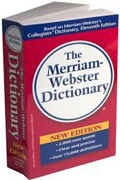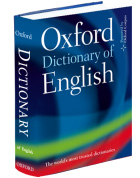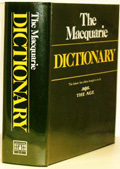Flawed Smoke Alarm Standards Explained
(Australia: AS3786-1993 | USA: UL217)
Ionization smoke alarms have life-threatening defects.
Standards Australia (SA) writes the Australian smoke alarm standard (AS3786-1993).
The Australian Government (CSIRO) tests and certifies ionization smoke alarms to the Australian Standard. In 2007, SA formally acknowledged AS3786-1993 is flawed.
CSIRO scientific test data proves ionization alarms are unable to activate in Australian Standards smoldering fire tests until 2-3 times the maximum safe limit set for photoelectric smoke alarms. AS3786-1993, is the standard which most smoke alarms in Australian homes are tested to.
Underwriters Laboratories (UL) writes the U.S. smoke alarm standard (UL217).
U.L. tests and certifies smoke alarms to the U.S. standard. In December 2011 UL were sued for allowing allowing ionization smoke alarms to pass a smoldering fire test that is not representative of a real-world (cool smoke) smoldering fire. UL settled out of court with a Confidentiality Order and has since corrected UL217. Ul217 now has a legitimate smoldering fire test which ionization alarms will allegedly be unable able to pass.
U.L.'s corrected smoke alarm standard comes into effect (in the US) circa mid 2020.
“Defendant UL was negligent or wanton . . . by failing to formulate and implement safety standards for
ionization smoke alarms that
require ionization smoke alarms to detect slow smoldering fires in a
timely manner. . .”
UL SUED

M O R E > > >
Can Australian & U.S. Smoke
Alarm Standards Be Trusted?
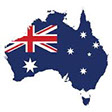
Smoke Alarm Standard
Produced By:

Smoke Alarm
Sensitivity Tested By:


Separate Tests for Ionization
and Photoelectric Alarms?
Y E S
AS3786-1993
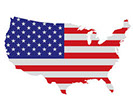
Underwriters Laboratories

Underwriters Laboratories

N O
UL217
World Fire Safety Foundation Report
'Can Australian & U.S. Smoke Alarm Standards be Trusted?'
Published in the Winter 2013 edition of Australia's
'Volunteer Fire Fighter' magazine.
Explaining Flawed Australian and U.S. Smoke Alarm Standards
Australia's Flawed Smoke Alarm Standard - Part 1
Most Smoke Alarms Currently Installed in
Australian and New Zealand homes are the Ionization Type.
Most were Tested by the Australian Government (CSIRO)
to Australia's Flawed Smoke Alarm Standard, AS3786-1993
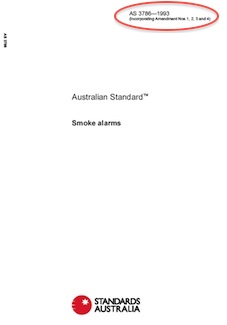
Australian Standard AS3786-1993
Australian Standard 3786-1993
'The Motherhood Clause'
AS3786-1993 states smoke alarms must
"...respond reliably to the presence of smoke."
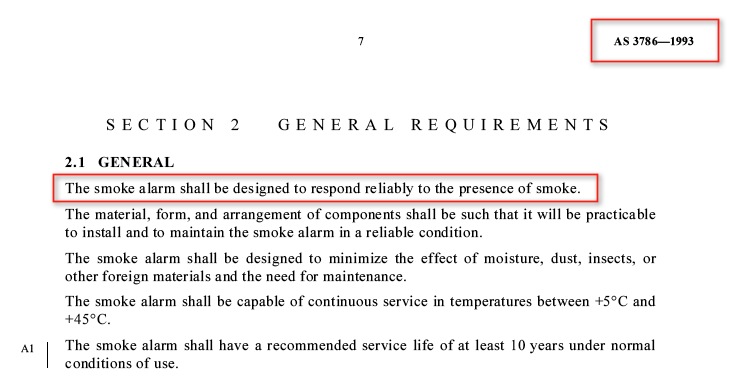
Ionization 'Smoke' Alarm Labeling Misleads Consumers
Ionization alarms are sub-micron particle detectors
which are incapable of detecting visible smoke.
(see the 'Aquarium Test')
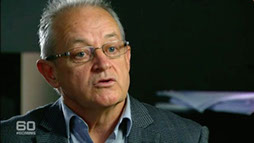
"Ionization alarms do not respond to visible smoke.
As I've said, they will respond to heat and flames
but they will not respond to visible smoke."
David Isaac, 60 Minutes, 'The Alarming Truth'
Extra Minutes 11 October 2014 | NSW Australia
David Isaac, Standard Australia Committee Member FP002
Exactly What Is "Smoke"?
Smoke is defined as "visible" particles of combustion.
The public perception of smoke is something you can see:
Since the mid 70's Ionization 'Smoke' Alarms
have been Falsely Called 'Smoke' Alarms
Not 'Particle of Combustion' Alarms
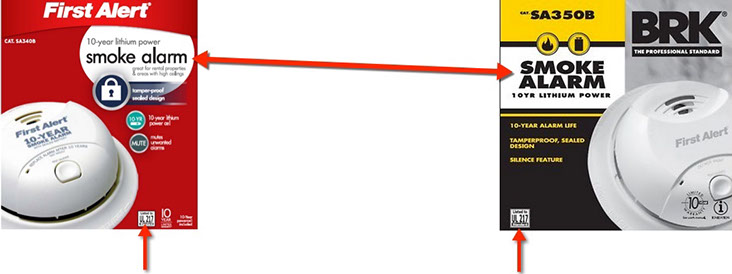
Since the mid 70's ionization
'smoke' alarm manufacturers
misuse the word 'smoke'
The public expectation is that
ionization alarms will respond
reliably to the presence of visible smoke - tragically they do not.
See 'The Aquarium Test'
Both alarms tested to the U.S. Smoke Alarm Standard, (UL217) and carry UL's 'seal of approval'


Why the Toymaker got it Right and the Smoke Alarm Industry got it Wrong
How the smoke alarm industry manipulated the meaning of 'smoke'
Karl Westwell, World Fire Safety Foundation CEO and Co-founder, explores how America’s largest toymaker responded when they discovered product safety problems; and how the smoke alarm industry dealt with the life-threatening limitations of ionization smoke alarms - by redefining the meaning of smoke.
M O R E > > >
Karl Westwell
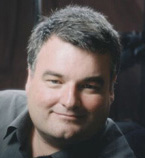
Australia's Flawed Smoke Alarm Standard - Part 2
Clause 2.1 of AS3786-1993 (above) states smoke alarms shall,"respond reliably
to the presence of smoke." However clause 3.2 (table 3.1) of the standard
specifies the completely separate test criteria that both ionization and
photoelectric alarms are subjected to when they are tested:
Photoelectric Alarms: A test for visible smoke (% light obscuration per metre)
Ionization Alarms: A test for invisible (sub-micron) particles ('MIC X' test)
Australia's Flawed Smoke Alarm Standard - AS3786-1993
Seperate Tests for ionization & Photelectric Alarms
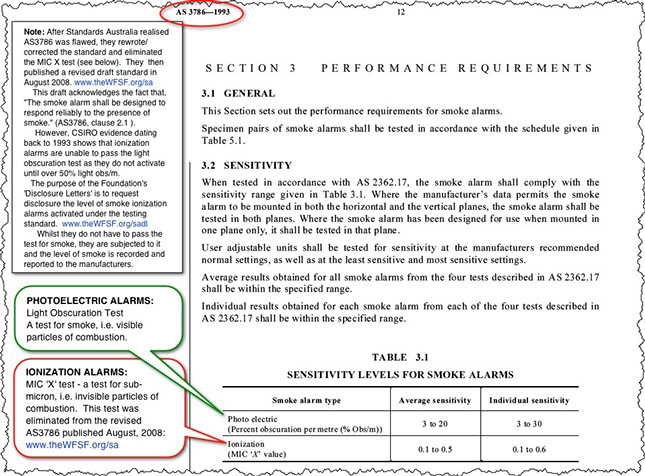
(emphasis added)
The FP002 Committee of Standards Australia attempted to
correct the flawed Standard so Ionization alarms would
have to pass a valid test - the same test for (visible)
smoke that photoelectric alarms have to pass.
The corrected standard eliminated the test for sub-micron particles so, like in the USA, there would be one test
for both ionization and photoelectric smoke alarms.
However, unlike in the flawed (hot smoke) U.S. smoldering
fire test the Australian test AS3786-1993 was a legitimate,
real-world (cool smoke), smoldering fire test.
(See the Law Suit Against the U.S. Standard: www.theWFSF.org/ulsued
The Failed Attempt to Correct
Australia's Flawed Smoke Alarm Standard
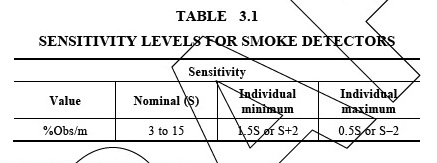
Excerpt Taken from the Draft Australian Smoke Alarm Standard (Feb 2007)
Showing the Elimination of the 'Mic X' Sub-micron Particle Test and Leaving the
Legitimate, (cool smoke), smoldering Fire Test for Both Photelectric AND Ionization Alarms
(Note: ionization alarms are unable to pass a legitimate smoldering fire test)
Despite the attempt to correct the flawed standard by having
a single legitimate, smoldering fire test, the draft
standard was rejected, without just cause, by the
Australian Building Codes Board (ABCB), who
failed to adopt the standard into legislation.
More about the Draft Standard H E R E > > >
'THE ALARMING TRUTH'
60 Minutes ABCB Interview
60 Minutes presenter Karl Stefanovic questions ABCB CEO,
Neil Savery about why the ABCB has not mandated
photoelectric smoke alarms in all Australian homes.
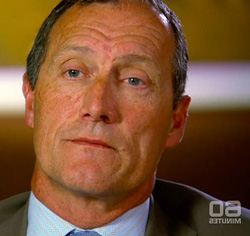
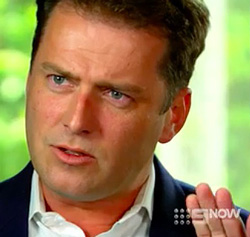
Neil Savery, CEO, ABCB
Karl Stefanovic, 60 Minutes
"Why wouldn't the Board be saying, Hang on it's good enough
for most commercial buildings in this country, it's good enough
for hospitals to be used why wouldn't it be good enough
for photoelectric alarms) to be used in households
where people are most vulnerable?"
Karl Steafanovic, 60 Minutes presenter's interview with ABCB's CEO Neil Savery
''The Alarming Truth' | 24 Oct 2014 | The ABCB interview starts at 7 min, 2 secs
See 'The Alarming Truth' H E R E > > >
For More Information
Visit the CSIRO Page
H E R E > > >
Australian Tenants and Landlords
Visit the WFSF's 'Tenants Lives Matter' Site
H E R E > > >
Questions?
Email Adrian Butler, Chairman, WFSF:
ab@TheWFSF.org

"The world is a dangerous
place to live; not because
of the people who are evil,
but because of the people
who do nothing about it."
Albert Einstein
"Ignorance, allied with..
power, is the most.. ferocious enemy..
justice can have."

James A Baldwin
"The only thing..
necessary for the.. triumph of evil is that..
good men do nothing."

Edmund Burke


